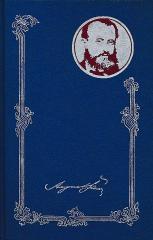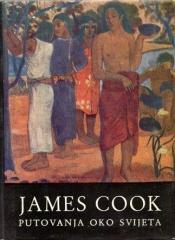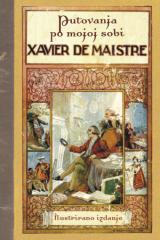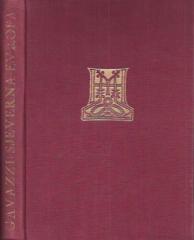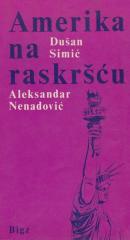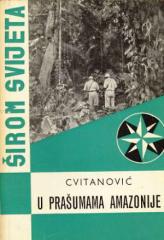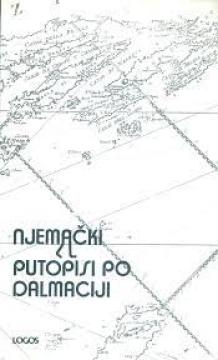
Njemački putopisi po Dalmaciji
"German travelogues around Dalmatia", edited by Ivan Pederin, is a collection of travelogues by German authors who traveled through Dalmatia during different historical periods and recorded their observations about this area.
The book provides valuable historical insight into Dalmatia, its landscape, customs, people and daily life as seen by German travelers. This collection covers a wide time span and offers different perspectives on Dalmatia as a region that has historically been a meeting place of cultures, trade and geopolitics.
Main topics of the book:
Geographical and cultural descriptions of Dalmatia German travelers were often fascinated by the natural beauty of Dalmatia, including its mountains, coast, islands and cities such as Split, Zadar and Dubrovnik. Travelogues give detailed descriptions of the landscape, Mediterranean climate and fertile fields, but also the challenges that nature presents to the people who live there. Dalmatia is presented as an exotic, but also harsh country, often exposed to natural disasters, but also with a rich history and culture.
Social and cultural life Pederin's collection of travelogues offers an insight into the social and cultural life of Dalmatians, through the eyes of foreign observers. Travelers recorded the customs, way of dressing, diet and daily life of the local population, with special reference to their social and religious customs. In some travelogues, Dalmatians are portrayed as proud and hospitable people, while other authors write about the difficulties they face due to economic backwardness and political turmoil.
Political and historical context The book also contains analyzes of the political situation in Dalmatia at the time when German travelers wrote their observations. This region, which was under Venetian, Austrian and Ottoman rule at different periods, is presented as a place of conflict between different political interests and influences. The travelogues also describe the influence of these authorities on daily life, trade, infrastructure and military presence in Dalmatia.
Meetings with the local population One of the interesting aspects of the travelogue is the meeting of the travelers with the local population. German authors often write about interactions with Dalmatians, describing their communication, hospitality, but also the language and cultural barriers that travelers encountered. Sometimes these encounters are full of positive impressions, while in other cases the authors portray stereotypes about the Balkans, looking at the local population with a touch of exoticism or misunderstanding.
Influences of the Mediterranean and the Balkans Travelogues show that Dalmatia is located at the crossroads between the Mediterranean and the Balkans and how this mixture of cultures has influenced its character. German travelers often comment on this cultural fusion, noting elements of Western European and Ottoman culture, which is reflected in the architecture, commerce and lifestyle of the Dalmatians. Dalmatia is presented as a unique space where different civilizational influences collide.
Tourist perspective and fascination The book also shows how German travelers often came to Dalmatia out of curiosity or adventure, wanting to get to know the "unknown" country. Descriptions of natural beauty, historical monuments (especially Roman and medieval heritage) and local customs are often based on fascination and admiration for unexplored regions.
From the content:
Travelogues of the Renaissance and Baroque Balthasar Hacquet and his ideological framework Characteristics of Vlaj H.F. Rodlich and his program of modernization of Dalmatia and its economy Dalmatia and its economic problems Naturalist Ernst Friedrich Germar and his adventures in Dalmatia Dalmatia in turmoil Josef Marx von Liechtenstern and his notion of Dalmatia as a springboard for Austrian conquests in the Levant Emperor Francis I finds Diocletian's palace a political symbol Francis I. about Split and Trogir in his diary Franz Petter and his painting of the ruggedness in Dalmatia Dalmatia as a forgotten province in Franz Petter's travelogues Romantic historicization of the image of Dalmatia by Heinrich Stieglitz Image of Dalmatia according to literary and cultural criteria Politicization of the cultural reality of Dalmatia in Kohl's travelogue Actualization of Dalmatian history and culture The picture of social conditions in Ida von Duringsfeld's travelogue Society and freaks in Dalmatia in the work of Ida von Duringsfeld Correction of the political image of Dalmatia after the Battle of Vis in a naturalism close to Heinrich Noah's travelogue A picture of misery, backwardness and superstition in Dalmatia Schiff's picture of Dalmatia devoid of political, economic and social seriousness Baron Alexander von Warsberg discovers new cultural values in Dalmatia and gives human content to the magic of history in Warsberg's Dalmatia Dalmatia and modern painting in Baumberger's travelogue Dalmatia and Secession in Gerog Baumberger's travelogue Hermann Bahr and Dalmatia Dalmatia almost like a manifesto of Austrian modernity in the work of Hermann Bahr Chronological bibliography of German and Austrian travelogues
No copies available
The last copy was sold recently.
